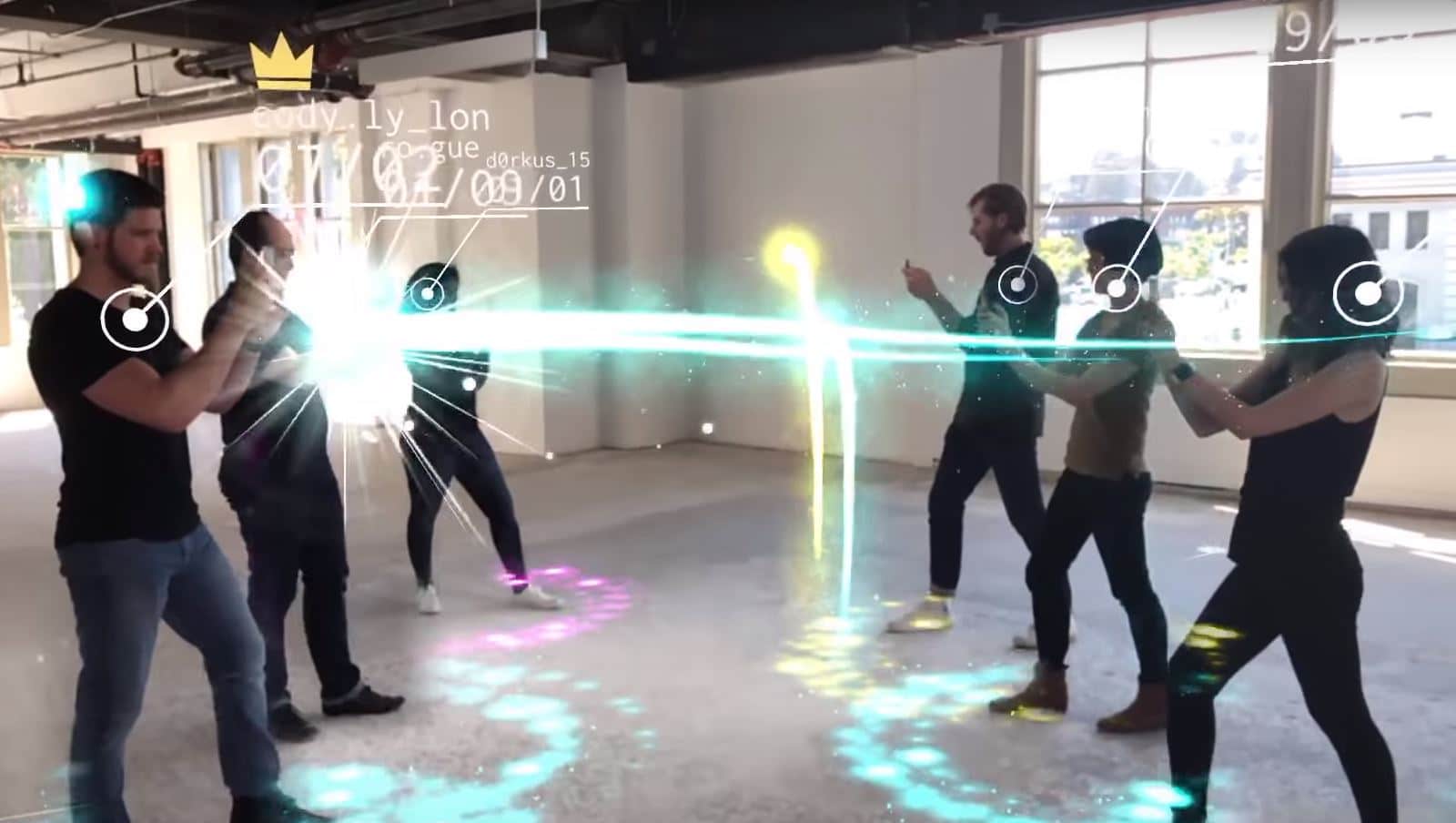
![]() This post is adapted from ARtillery Intelligence’s report, Lessons From AR Revenue Leaders, Part II: Niantic. It includes some of its data and takeaways. More can be previewed here and subscribe for the full report.
This post is adapted from ARtillery Intelligence’s report, Lessons From AR Revenue Leaders, Part II: Niantic. It includes some of its data and takeaways. More can be previewed here and subscribe for the full report.
Picking up where we left off in examining Niantic’s business strategy, one remaining question is its path forward. Much of its activity will radiate from its Real World Platform, including its own game development and that of third parties it jumpstarts through developer challenges.
This will carry the company’s founding principles (at least in a pre-Covid context) to get more people outside in physical activity. It also goes back to AR-lead Ross Finman’s design principles we’ve examined. AR should be used as a tool in a toolbox… not an endpoint or a product in itself.
“I’ll say something controversial here but AR by itself is not valuable,” he said at the DICE conference. “We all need to remember that AR is a technology, not an application. People don’t care about a mobile device, they care about making calls [and] checking email.”
The lesson to other AR players is to know consumer desires and pain points; and how the technology can address those. That’s a challenge for AR because marketplace experimentation is still underway. We have some signals, such as consumer sentiments, but more are needed.
“It’s about figuring out what is different about AR. Why do you need an experience in AR?” Finman said at the TC Sessions AR/VR Conference. “When ARkit came, out there were tic-tac-toe [apps] for AR…. You don’t need AR to play tic-tac-toe.”
The Real World is the Content
As for the types of apps that will best translate AR tech to AR products, Finman has a fresh take on physical-digital convergence. This expands AR definitions beyond digital objects on physical scenes. Flipping that, the physical world can rather integrate with and influence digital play.
This boils down to a key Finman concept which is that the real world is the content. So instead of creating animations that are primary game elements that interact with the real world as secondary game elements, things are flipped. The real world should have more of a leading role.
For example, could game mechanics be built around real-world elements such as shapes and colors? Finman poses a gamified experience from “mining” the colors of the world around us. This would apply computer vision to intake visual signals and process them into fun experiences.
“The world is full of colors, so you can make experiences where you mine colors out of the world,” he said at TC Sessions. “The resources of your games can be the color makeup of your room… The strategies that you would use change based off of the colors of the environment.”

AR’s Innovators
Finman also asserts that the biggest common mistake is to develop technology that’s cool or challenging to developers, but without enough insight or evidence of consumers’ real needs or desires. This is the classic “hammer searching for a nail,” affliction in early-stage tech sectors.
“There’s a growing problem in the AR community where it’s a bunch of tech people who make cool tech that geeks like me can really appreciate, but the general consumer is still a ways away,” said Finman. “The tech race is a couple of generations ahead of the application space.”
Speaking of tech personas what skill sets are primed to succeed in AR? Finman believes gaming is fundamental. The game developer skill set and mindset translate well into AR UX design. That’s not just for games, but enterprise applications such as training simulations.
“As augmented reality begins to grow — and the AR market in the gaming market, or in this interconnected web — the game developers who understand this medium faster and newer than other people are going to actually have an immense amount of impact,” said Finman.
But it doesn’t end there. AR will be multi-disciplinary. That includes computer vision, machine learning, user experience & design and even robotics. True to Charlie Fink’s book Convergence, AR won’t be one technology but the confluence of many. So there will be many points of entry.
“You need to understand reality in order to augment it,” Finman said. “If you want to put a Pikachu on the table or have a robot put a cup on the table, you need to understand the table… so a lot of the people we hire come from fields like robotics, self-driving cars, and drones.”

Confidence Signals
As the AR industry – and its practitioners – evolve with the medium, the bad news is that things are so early and undefined. But the good news is that things are so early and undefined. There will be ample value creation as AR and its revenue models continue to grow into their own skin.
Lastly, a macro factor that provides confidence for this forward march of AR is the level of investment from tech giants. As we’ve examined, this is a good confidence signal given that they believe in the technology. Many tens of billions in investment will also be a good accelerant.
“They’re coming at it from many different directions but they’re all trying to solve the same problem,” said Finman. “These are companies with some of the biggest financial reserves we’ve ever seen. This leads to what I consider to be an obvious conclusion: AR is inevitable.”
We’ll pause there and circle back in the next installment to continue the discussion of how Niantic holds AR product and business lessons. Meanwhile, check out the full report here.





